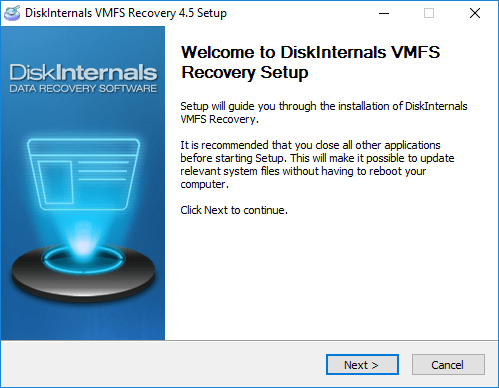

- Vmware download vmdk file too small install#
- Vmware download vmdk file too small driver#
- Vmware download vmdk file too small plus#
- Vmware download vmdk file too small windows#
You may configure the swap file using the VMware Management Interface (Swap Configuration in the Options page) or from the service console using the vmkfstools command. If you do not configure a swap file, memory may not be over committed. You may configure larger or smaller swap files or add additional swap files. A default swap file size equal to the physical memory size of the computer is recommended in order to support a reasonable 2x level of memory overcommitment. The amount of swap space configured for the system limits the maximum level of overcommitment. Similarly, while memory reservations are used for admission control, actual memory allocations vary dynamically, and unused reservations are not wasted. In practice, only a small fraction of the swap space may actually be used. This swap reservation is required to ensure the system is able to preserve virtual machine memory under any circumstances. Swap space must be reserved on disk for the remaining virtual machine memory - that is the difference between the maximum and minimum settings. Additional overhead memory is reserved for virtual machines larger than 512MB. The overhead memory size is determined automatically it is typically 54MB for a single virtual CPU virtual machine, and 64MB for a dual-virtual CPU SMP virtual machine.
Vmware download vmdk file too small plus#
Thus the total required for each virtual machine is the specified minimum plus overhead. Memory must be reserved for the virtual machine's guaranteed minimum size additional overhead memory is required for virtualization. Verify that the paged/nonpaged pool usage has stabilized.Īdmission Control Policy VMware ESX Server uses an admission control policy to ensure that sufficient unreserved memory and swap space are available before powering on a virtual machine.
Vmware download vmdk file too small windows#
Open Windows Task Manager, click the Processes tab, go to View -> Select columns on the top menu, and select the PID, Session ID, handles, memory paged pool and nonpaged pool checkboxes.Sometimes specific processes may experience kernel memory leaks, and this can be found out by analyzing per-process paged/nonpaged pool usage:

At this point, we are not facing any sort of NP pool leak caused by PVC components.Īnalyzing per-process kernel memory usage There is only one PVC-related tag (Drre) and its NPP share is only 14MB (out of up to 40 allowed by design). NDpp share may be decreased (or eliminated completely) by turning off a variety of packet schedulers, including the PVC traffic shaper and QoS-configured containers.

If you limit the number of logical CPUs to some less amount, TPLA will decrease accordingly. If the CPU load is not really high on the server, the amount of CPUs may appear to be too numerous. TPLA always occupies roughly 5MB x NUM_CPUs. They both originate from the TCPIP stack and the ndis.sys driver. Note TPLA and NDpp tags - we can directly affect them. Here's an example of analyzing the kernel memory usage. You can find the examples of using poolmon here: PoolMon Examples. With the help of poolmon, check the usage of Paged/Nonpaged memory pools and identify the abusing memory tags.
Vmware download vmdk file too small driver#

Vmware download vmdk file too small install#
If it is high (>200MB on a 32-bit system), it makes sense to analyze its utilization and fine-tune the server.ĭownload and install the corresponding tools pack that contains poolmon.exe utility: Use Windows Task Manager to check NonPaged Pool value. Analyzing kernel memory usage with Pool Monitor


 0 kommentar(er)
0 kommentar(er)
